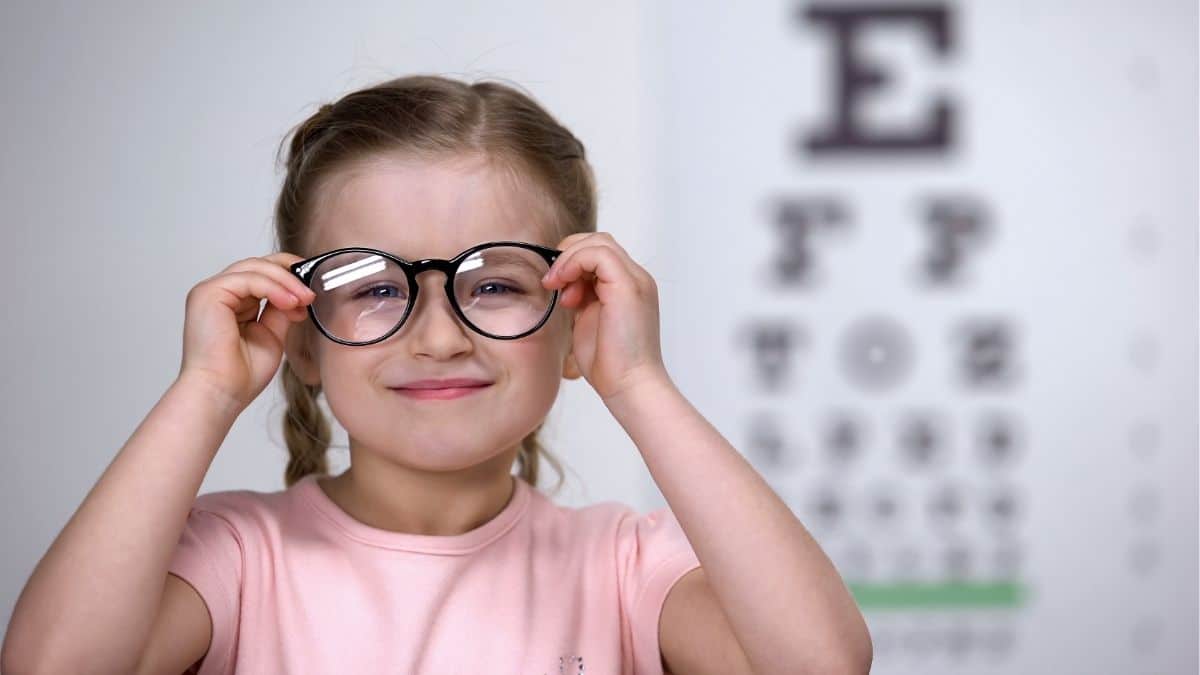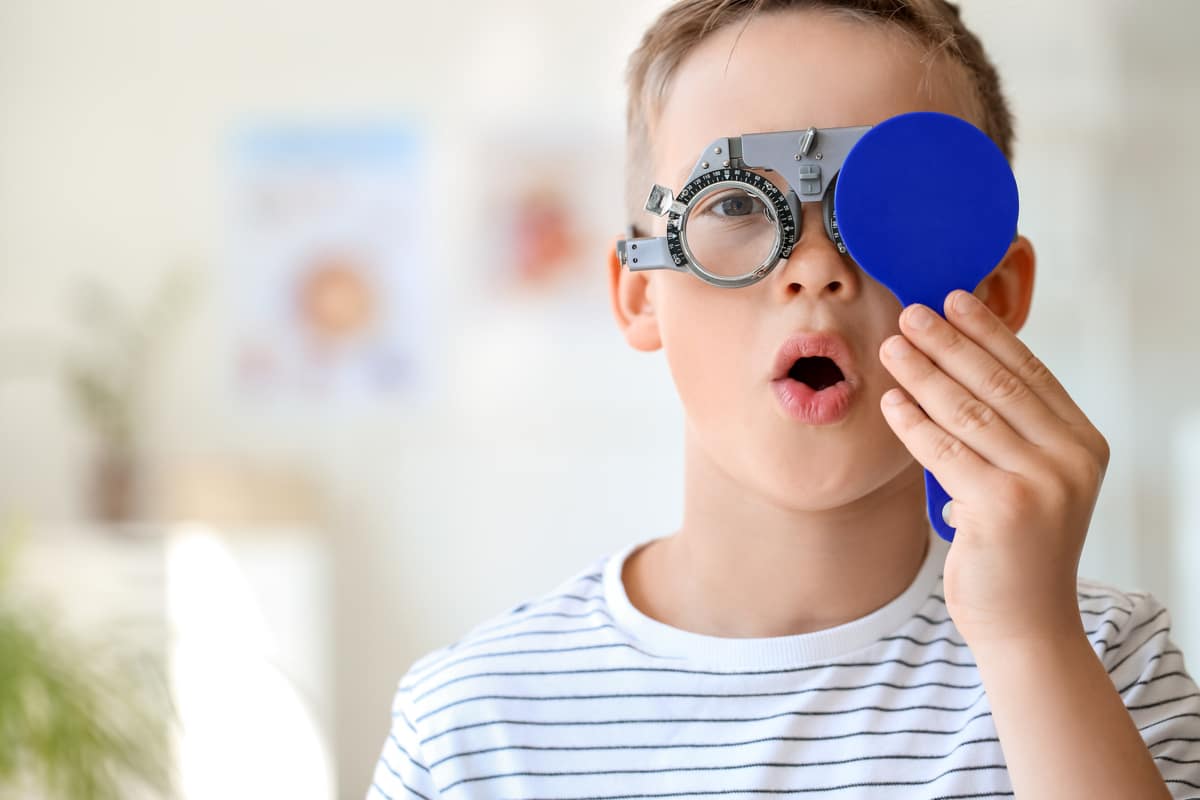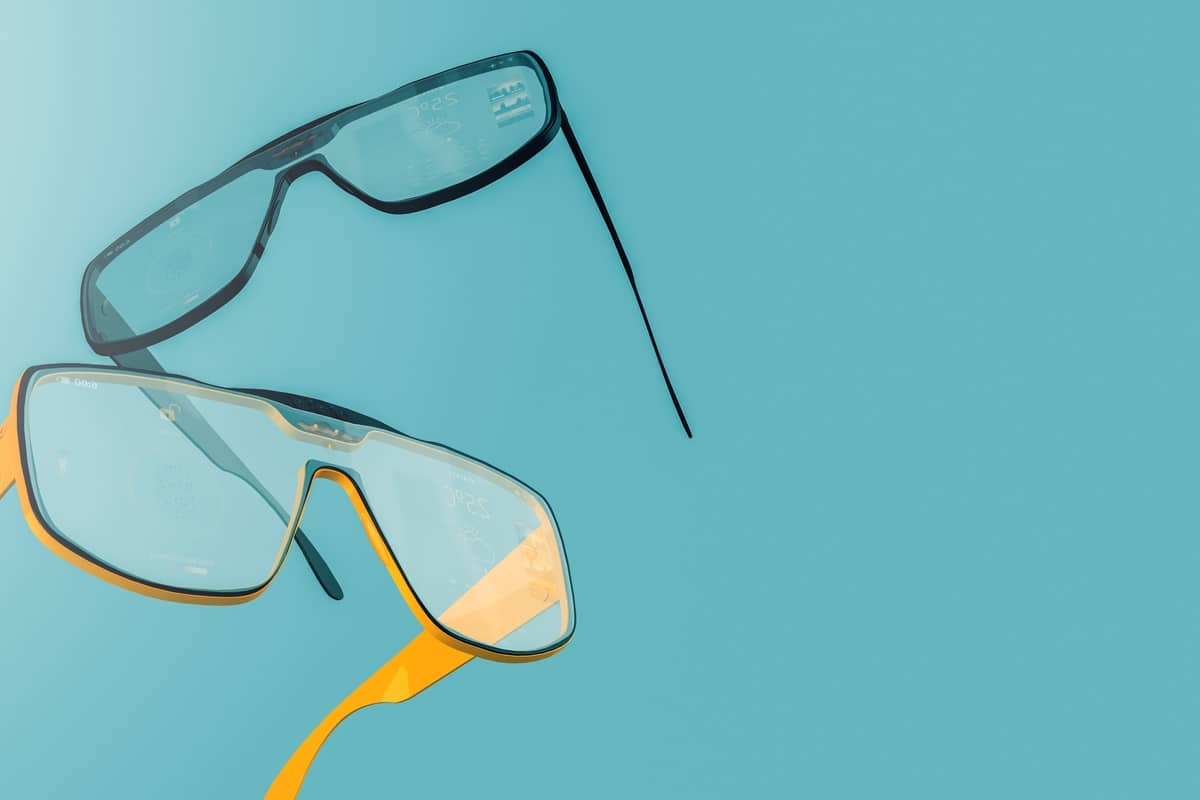Kids don’t always tell you when something’s wrong with their vision, mostly because they don’t realize it themselves. They think everyone sees the way they do. That’s why it’s important to recognize the early signs that your child needs glasses.
We put this guide together to help you spot those early clues and know when to schedule an eye exam. Catching vision issues early can make a big difference in your child’s daily life.
Common Clues That Your Child Needs Glasses
As parents, we constantly observe our children for signs of their well-being. Their vision, crucial for learning and development, is no exception. Paying attention to specific behaviors can indicate it’s time for an eye exam.
Squinting and Frequent Eye Rubbing
If your child frequently squints while watching TV or reading, it may be an attempt to see more clearly. Similarly, rubbing their eyes often, especially during visual activities, can signal fatigue or discomfort from straining to focus.
Sitting Too Close or Holding Objects Near
Children with nearsightedness often sit close to screens or bring books unusually close to their faces. This helps them compensate for blurry distance vision and clearly signals that their eyes should be checked.
Complaints About Headaches or Eye Pain
Children might say their eyes hurt or feel tired after reading, writing, or screen time. If headaches occur regularly after school or homework, it may be due to vision issues rather than other health concerns. When children experience eye strain from screen time, it’s essential to consider how these visual demands affect their developing eyes.
School Troubles Might Be Vision-Related
While academic challenges stem from many sources, one common but often overlooked culprit is their vision. Poor eyesight can silently impact a child’s ability to learn and engage, leading to easily misinterpreted behaviors.
Struggling in Class
If your child’s grades begin to fall, the root cause might not be motivation—it could be their eyesight. Not seeing the board clearly or having difficulty reading small text can hinder learning.
Avoiding Reading or Homework
Kids with undiagnosed vision issues might avoid reading altogether, not because they dislike it but because it’s difficult and tiring. This avoidance often goes unnoticed or is mistaken for a lack of interest.
Trouble Paying Attention
Inattention and behavior issues can be misread as ADHD or disobedience when, in fact, the child can’t see clearly. Before seeking other diagnoses, rule out vision concerns with a professional exam.
Pediatric Eye Exams: What to Expect
Ensuring your child’s visual health is crucial to their overall development. Regular pediatric eye exams are vital for detecting and addressing potential vision problems early, setting them up for success in school and life. But what exactly happens during these important check-ups?
How Exams Help
Eye exams for children are painless and typically include vision testing, eye alignment checks, and an overall health evaluation. These exams identify conditions like nearsightedness, farsightedness, and astigmatism, all of which are treatable with glasses.
When to Schedule One
Experts recommend eye exams at 6 months, 3 years, and before first grade. But if your child shows any signs mentioned above, don’t wait for a routine check—schedule a pediatric eye exam appointment as soon as possible.
What Happens After a Prescription
Receiving a prescription for glasses marks a vital step toward clearer vision for your child. But what comes next? Understanding the prescription details and how to choose the right frames are key to ensuring your child embraces their new eyewear.
Understanding Eyeglass Numbers
A glasses prescription includes numbers that indicate the type and degree of correction needed. Minus signs show nearsightedness, while plus signs reflect farsightedness. Astigmatism values are also included if required.
Choosing Frames That Work
Pick frames that are light, durable, and designed for kids. Many options feature flexible hinges and fun colors that help make wearing glasses something your child feels good about.
Helping Your Child Adjust
Once your child has their new glasses, the next step is helping them adjust to wearing them. This transition can sometimes take a little time, but with your support and encouragement, they’ll soon enjoy the world with newfound clarity and confidence.
Encouraging Use
It may take a few days or weeks for your child to get used to wearing glasses. Encourage them to wear them consistently and praise them for doing so. A clearer vision will quickly reinforce the benefits.
Building Confidence
Let your child help choose their glasses to ensure they feel proud wearing them. Point out positive role models who wear glasses and reassure them that they are normal and cool.
Early Action Makes a Difference

If you’re wondering whether your child needs glasses, trust your instincts. The earlier you address vision issues, the easier it will be to support your child’s development in school, sports, and daily life. Don’t wait—contact Art of Optiks today to schedule your child’s comprehensive eye exam.




